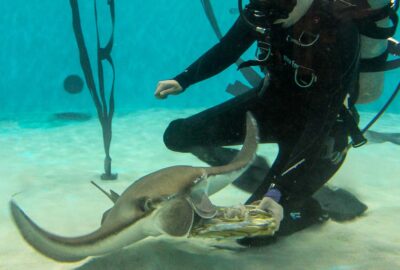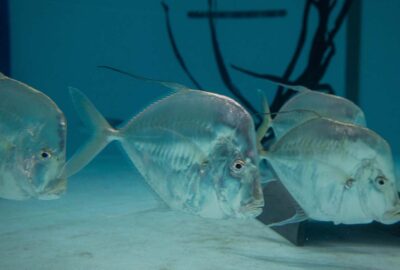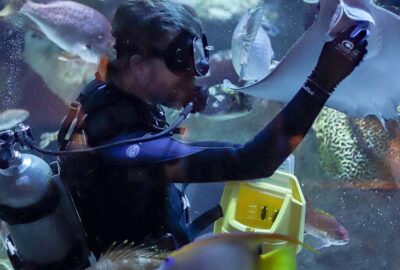Don’t Miss These Hidden Gems of the New England Aquarium
We’re spotlighting some lesser-known species and where to find them during your visit.
By New England Aquarium on Wednesday, March 26, 2025

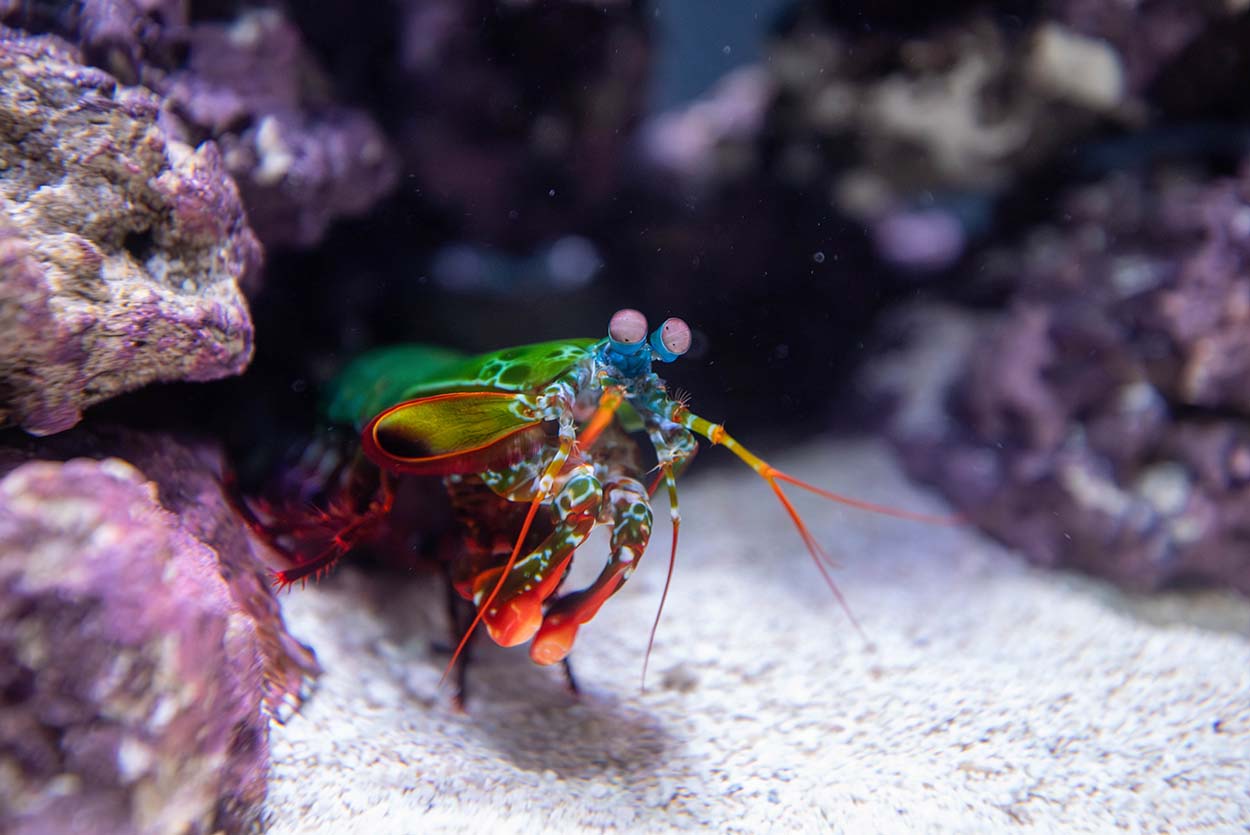
It’s hard to miss Myrtle swimming around the Giant Ocean Tank or not notice the busy (and noisy!) African and southern rockhopper penguins that call the Aquarium home. But, with nearly 10,000 animals to discover, there are some that might not be on your radar.
Make sure you check out these “hidden gems” next time you visit the New England Aquarium.
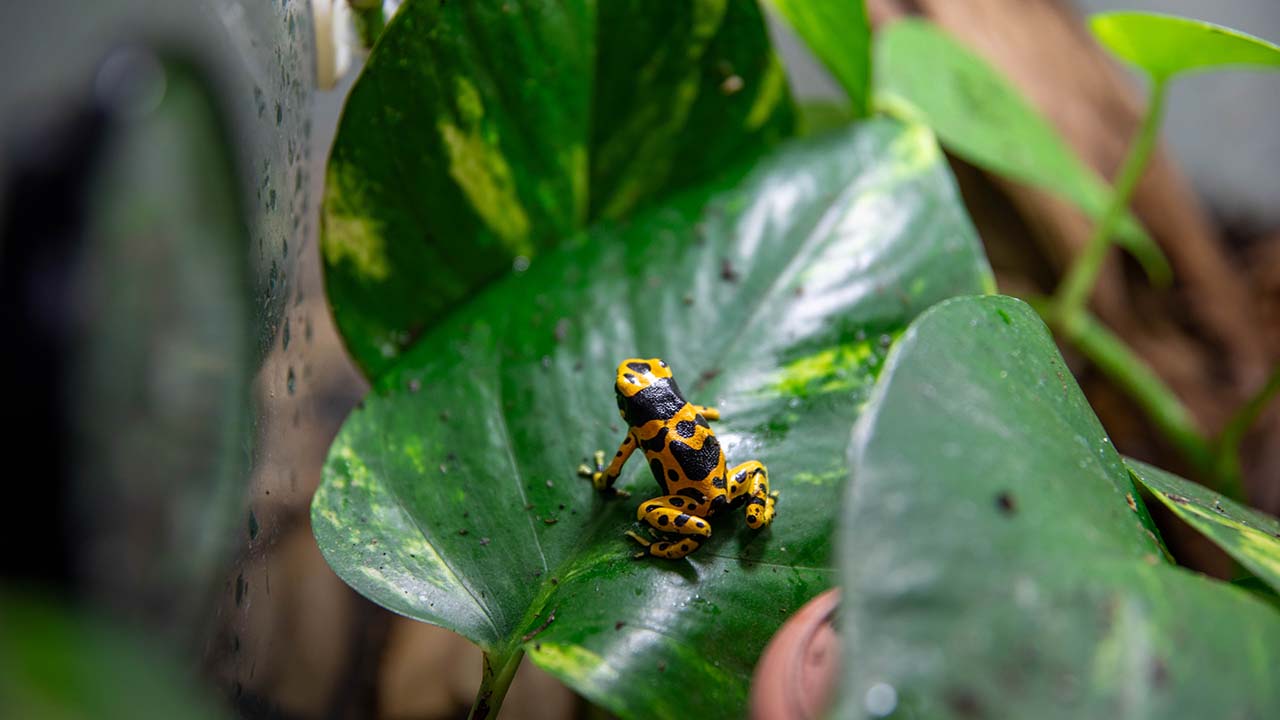
Brightly colored amphibians
On the third floor of the Aquarium, among our Amazon Rainforest exhibits, you’ll find the dart frogs hopping in their habitat. There are four different species of dart frog here at the Aquarium: blue, dyeing, yellow-banded, and green-and-black, and their bright colors warn predators in the wild that these little frogs are poisonous!
But, did you know that dart frogs aren’t naturally poisonous? They acquire their toxins from the insects they eat! Unlike their wild counterparts, our Aquarium dart frogs don’t eat poisonous insects. Instead, they munch on fruit flies that our team cultures in-house, as well as small pinhead crickets. So, while they still look like it, they aren’t poisonous! Learn more about these fascinating frogs during your visit.

Axolotls and other animal ambassadors
Our three axolotls, Chi, MC, and Fantasma, are part of what we call our “animal ambassadors”—species that help our guests learn more about conservation. In the wild, axolotls are found solely in the waters and wetlands of Lake Xochimilco in Mexico City, Mexico, a fragile ecosystem that’s under threat from the effects of human activities and climate change.
You can have a chance to meet the axolotls or one of our other ambassador animal species, including our dart frogs, lobsters, and local turtle species, during daily Animal Encounters at 10:45 a.m. and 3:15 p.m. in our Blue Planet Action Center on the first floor or upstairs in our Temperate Waters Gallery.
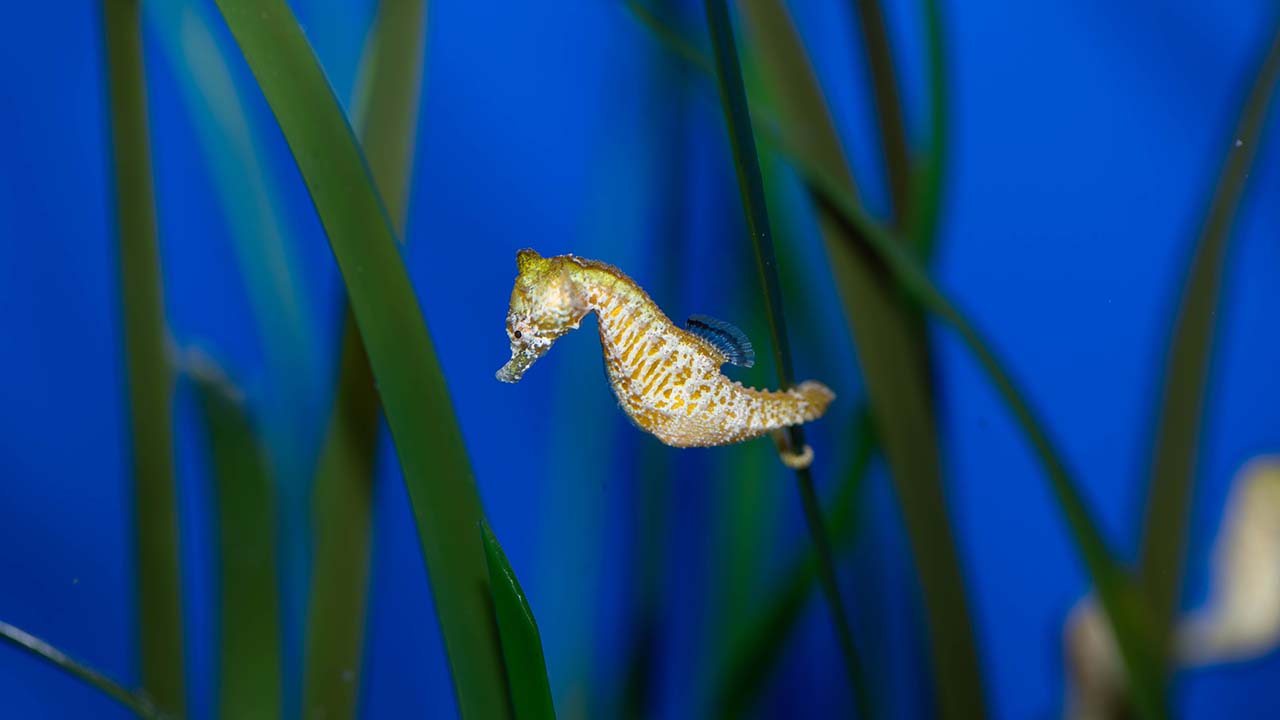
Coral reef communities
Our new “Healthy Corals, Healthy Reefs” exhibit is a 5,000-gallon tank that’s home to a variety of live corals, but it’s just one of three places around the Aquarium where you can see live reefs and the diverse animals that call them home!
In the West Wing of the Aquarium, just across from the Shark and Ray Touch Tank, you can admire more coral species in the Lagoon Coral Reef exhibit, highlighting the habitat of the shallow waters of Indonesian reefs.
Upstairs at the top of the Giant Ocean Tank, you’ll find the Yawkey Coral Reef Center, which is home to a number of species native to the Caribbean, including endangered staghorn coral. Many of these animals are too small to be seen in the Giant Ocean Tank, so come take a closer look at the dwarf seahorses, long-spined urchins, and chain and goldentail moray eels.

An ancient relative
Our South American lungfish, affectionately named Captain Bobo, is a gem that’s no longer hidden. After our team determined Captain Bobo wasn’t well-suited for his previous exhibit, he was moved behind the scenes at the Aquarium, where his outgoing personality made him a favorite among our staff. Luckily, our recently refreshed Ancestral Fishes exhibit presented a new opportunity for Captain Bobo.
Now, you can spot him on exhibit with other “ancestral” fishes, including shovelnose sturgeon, longnose gar, and Asian arowana. These fishes’ unique adaptations can give us insights into how fish evolved and tell us about the evolution of other species, too—including humans. So, when you meet Captain Bobo, you might be surprised to see how much you have in common!
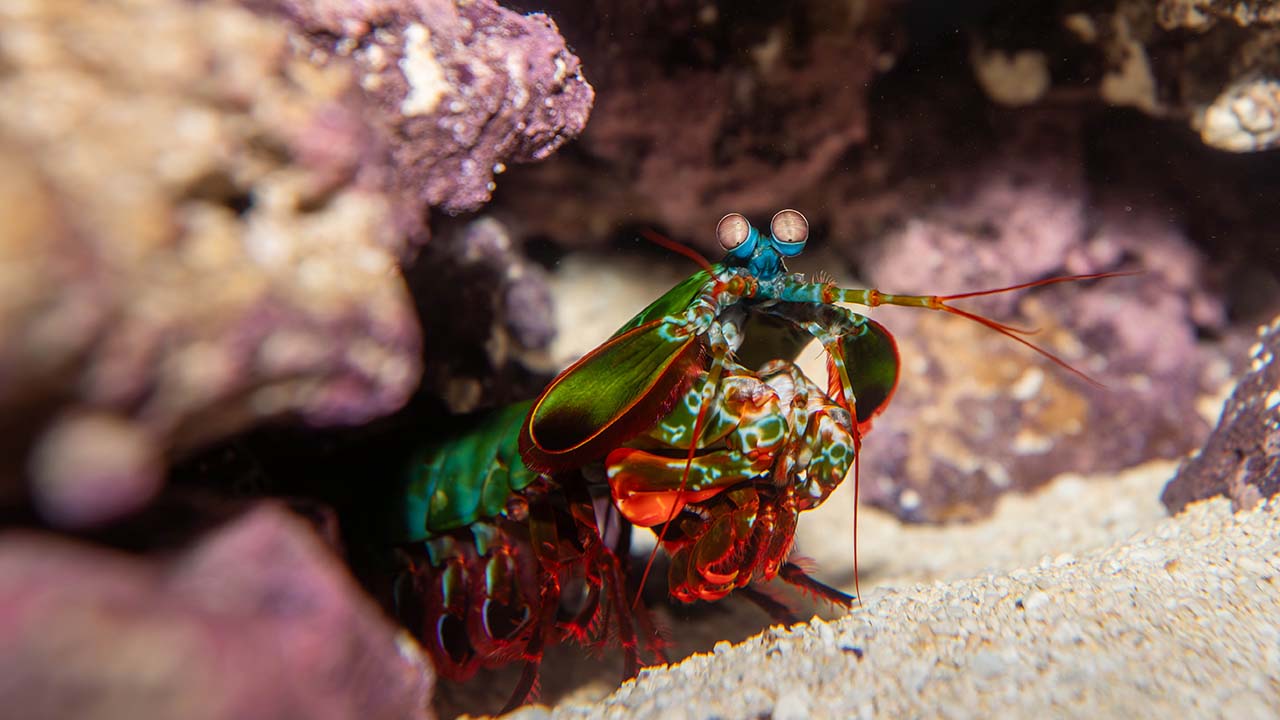
A crustacean that packs a punch
The peacock mantis shrimp might be one of the smaller animals here at the Aquarium, but it’s also one of the mightiest. Mantis shrimp like Scylla, whom you can spot hiding out in one of the smaller habitats beside the Healthy Corals, Healthy Reefs exhibit, use their club-like front appendages to “punch” their prey at speeds of up to 50 mph. With forces up to 1,500 lbs., they stun their opponent in a burst of bubbles.
Mantis shrimp also boasts some of the most complex eyes in the animal kingdom, with more than five times the number of color photoreceptors as a human eye. That means Scylla can detect a much broader spectrum of light, including polarized light. Plus, they can move each of their eyes independently! Keep in mind how differently Scylla perceives the world when you’re looking at them during your visit (and don’t worry about the glass—we tested it, and it won’t break).

